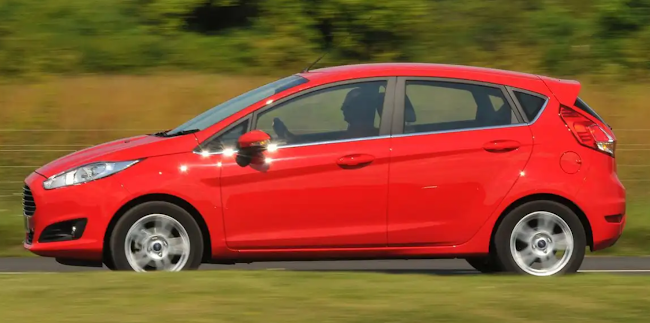A Guide To The Ever-Popular Toyota Hilux Bakkie
From a slow start as a purely commercial vehicle, the Toyota Hilux has, over decades, expanded its appeal to cover personal transport and leisure use on top of becoming the default workhorse in our market. We look at this popular model’s recent history and tell you everything you need to know about the Toyota Hilux for sale.

5 key facts you should know about the Toyota Hilux.
Don’t let the leather upholstery and touchscreen audio system fool you into thinking that the Toyota Hilux has become a soft-roader. Even though the Hilux has become a bit of a status symbol over time, thanks to the proliferation of high-trim family- and leisure-oriented KHilux variants, it’s still a workhorse at its core. This reality brings advantages and disadvantages, but one thing’s certain: the Hilux is still a very accomplished commercial vehicle.
1. Today’s Hilux can be had with a choice of three petrol engines, or with diesel in three output levels. The two four-cylinder petrols are aimed at the entry-level workhorse market, but the diesels cover the whole spectrum from bare-bones utility to luxurious family transport.
2. All variants have the same wheelbase length (and similar overall length), but there is a choice between narrow and wide body styles, along with three cabin designs.
3. Four-wheel drive models are very accomplished off-road but are probably surplus to most buyers’ requirements. That’s why almost all trim levels can be had with either rear- or four-wheel drive.
4. While the current generation (launched in 2015) has all-new diesel engines, the three kinds of petrol are largely carry-over units from the older model.
5. The current Hilux is more of a thorough redesign of its predecessor than it is an all-new vehicle, but it is very little in the way of parts interchangeability between the last two generations.
https://img.autotrader.co.za/3258084
It’s amazing that Toyota managed to keep the previous-generation Hilux competitive for as long as they did because its opponents started catching up to this class leader about halfway through the old model’s 11-year lifecycle. But, when the current generation arrived in 2015, it represented a real all-around improvement on the outgoing model. While its market segment is getting ever more competitive, today’s Hilux still manages to capitalize on its historic popularity, capability, and reputation for innate toughness to lure buyers into showrooms. Meanwhile, judicious updates have kept the current Hilux up to date and added new equipment and some special editions along the way.
Pros
- Being a Hilux, durability and longevity is practically a given. This means added appeal to those buyers who’ll use their Hiluxes to do real work, and who demand a long service life and cost-effective maintenance.
- Seeing as the Hilux was designed to cope with hard work and bad roads, normal use as a family vehicle won’t even come close to stretching its abilities to handle anything you can throw at it.
- One of the current model’s major improvements over its predecessor is in overall comfort and refinement. Many of its opponents still better it in this regard, but the Hilux is nonetheless a lot easier to live with than its predecessors.
- There’s also a fair amount of modern technology on offer, with touchscreen audio systems, standard navigation and LED lighting available in some derivatives.
- Even in entry-level trim, the Hilux is equipped with ABS, 3 airbags (two frontal and one for the driver’s knees), and power steering. Higher-trim variants add more safety features and nicer toys, to go with their higher list prices.
- 4x4 derivatives are pretty much unstoppable off-road, which explains their popularity with the bundu-bashing crowd.
- In the same vein, aftermarket accessories are widely available and generally of high quality, which will help those who wish to customise their Hiluxes beyond original design parameters.
Cons
- Overall refinement isn’t bad for a vehicle of this type, with noise levels being particularly well-contained. Ride quality isn’t a strong suit for any Hilux, however, in spite of the improvements applied to the current generation model.
- OEM Toyota service- and spare parts are surprisingly expensive, as are dealership labour rates. However, once the warranty has expired, owners can choose from a plethora of workshops that’ll be able to keep their vehicles maintained at a very reasonable cost.
- Even after its 2015 redesign, double-cab variants don’t have a huge amount of rear-seat space.
- Considering their standard equipment levels, new Hiluxes are priced near the top of their category, so value for money isn’t that great at face value. However, strong value retention alleviates some of the pain of those steep-ish pricetags.
- Because of strong demand across South Africa’s borders (and other reasons such as parts compatibility with other Toyota commercial vehicles), Hiluxes are unfortunately very popular theft- and hijacking targets.
Available with a similar range of body styles and closely matched under the bonnet, Ford’s Ranger is the Hilux’s closest competitor. As with the Hilux, the Ranger range opens up with competitively-priced, low-trim single-cab workers, and runs upwards from there. High-spec Rangers offer more driver aids and an all-around upgrade in available technology, however, and cost about the same as their Hilux opponents.
New vs used Toyota Hilux
Barring mild model updates since 2015, today’s Hilux is still essentially the same vehicle as early examples of the current generation, with no mechanical changes or dramatic spec level increases along the way. However, the 2018 range update has brought an added focus on safety features in low-trim variants, while high-trim Hiluxes now benefit from LED main beams and upgraded infotainment systems.
Thanks to its stellar reliability record, there’s no reason to fear buying an older Hilux, even if the standard warranty for 3 years or 100 000 km has expired. The only real reason to insist on a new Hilux (apart from the new-car smell) is if you want a full-term warranty and service plan for 9 services (90 000 km).
But, once the warranty has expired, there’s only one reason to keep servicing the car at the dealership: the service history. A dealership service record may stand you in good stead when it’s time to sell your Hilux because such a full-service record could add a few thousand Rands to your trade-in value. You will however have to pay dealership labour rates, which are generally much higher than those of non-OEM (private) service centres.
Fortunately, it’s not hugely expensive to service a Hilux, and, because they’re so easy to work on, it’s easy to find a workshop that’ll perform basic servicing and even more-major repairs for a lot less than you’d pay at a dealership.
There’s one major upside to buying an older Hilux, though, and that’s the initial purchase price. These vehicles don’t depreciate very quickly, but their values do nonetheless drop once they’re a few years old or the odometer shows some distance.
Take the relatively undesirable single-cab 4x2 2.4GD-6 SRX as an illustration: 2016 examples with fairly high mileages still command surprisingly high prices, and are only about 25% less expensive than brand-new (2019) examples of the same variant. This can largely be ascribed to the perpetual popularity of Hilux bakkies for sale, but also demonstrate the high regard in which these vehicles are held in the used-car market. Consequently, value retention has become a major drawcard for Hilux buyers.

Average costs of running a Toyota Hilux
While it’s impossible to accurately predict how much any vehicle will cost to run in the short- or long term, it’s worth noting a few points:
- All new Hiluxes come standard with a warranty for 3 years or 100 000 km, along with a service plan for 9 services (which translates to 90 000 km). Toyota also offers a warranty extension plan for used cars at a comparatively small cost, so enquire at your dealership about this option.
- Non-OEM servicing will be considerably less expensive than having it performed by a dealership, but we’d recommend using genuine (OEM) service parts even at non-OEM workshops.
- The Toyota Hilux is considered to be a very high-risk vehicle by the insurance industry, purely based on its popularity among the long-fingered. As a result, a Hilux may be surprisingly expensive to insure. However, remember that an insurance risk profile is extremely dependent on the car’s storage security arrangements, areas in which it travels, and even total mileage accumulated in business use.
- Various Hilux variants deliver similar fuel consumption figures, depending on the drivetrain- and bodyshell choices. Single-cab, manual-gearbox 4x2 diesels should return mid-7 ℓ/100 km averages, rising to more than 12 ℓ/100 km for the automatic 4.0 V6 4x4 double-cab. However, most diesel derivatives should average better than 9.5 ℓ/100 km, unless fitted with off-road accessories, roof racks, or bigger wheels.
- Depending on the trim level, Hiluxes feature anything from 205/70R15 commercial-vehicle tyres to 265/60R18 all-terrain items as a standard. As a result, replacement tyre costs vary widely across the model range, although all derivatives should extract at least 80 000 km from a set of tyres (excepting severe off-roading or potential tyre damage due to poor road conditions).
Maintaining your Toyota Hilux
If you buy a used Hilux with an expired warranty, you can choose to have it serviced and maintained at either the Toyota dealership or at a private service centre. Toyota parts are generally on the expensive side of reasonable from the agents, and dealer workshop labour rates are quite high as well. If your Hilux has an active service plan, you’ll have no reason to take it anywhere else, though, as it’s all included in that perk.
Private (or non-OEM) service centres have much lower labour rates than the agents, and they will have access to second-tier (non-OEM branded, but still produced according to OEM specifications) parts supplies as well. Aftermarket support for Toyota body- and mechanical components are very strong, so you may find that most components can be found at either the agents or from non-OEM parts shops. However, going the non-OEM route may adversely affect your car’s resale value, as this also means that the car won’t have a full dealership service record.
The Hilux has been on the market long enough for any flaws and failings to be fairly well-known. Fortunately, and maintaining the Hilux’s rock-solid reputation, there are very few reports regarding problems with its mechanical components. Even wear items such as clutches and brakes appear to have above-average longevity, which should ease long-term maintenance concerns somewhat.
The only possible point for concern would relate to very high-mileage examples, which may require attention to cam belts or cam-drive chains, and diesel engines which may require their turbochargers or injectors to be re-conditioned or replaced. This is not limited to the Hilux, however, and applies to any used, high-mileage diesel engine.

.
.
.
Original source: https://www.autotrader.co.za/cars/news-and-advice/


Comments
Post a Comment